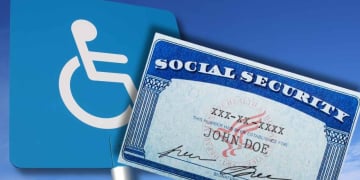Amid a truly challenging economic scenario, with volatile inflation and rising food and service prices, the New York State government is preparing to implement a series of stimulus measures that promise direct relief for millions of residents—more than 8.2 million in particular.
Governor Kathy Hochul has outlined a new fiscal plan that will mark a turning point for many working families. Although all the details have not yet been publicly released, it has been confirmed that significant stimulus payments will be forthcoming to offset the impact of the cost of living and provide tangible relief to those who need it most.
The big fiscal package to ease the economic burden
Governor Kathy Hochul introduced a fiscal package for 2025-2026. Its goal is to address the impact of inflation and the high cost of living. The initiatives seek to provide direct financial support to residents. They focus on four specific areas of economic relief.
The proposal addresses concerns about affordability in the state. It includes cash refunds and expanded credits. It also includes tax reductions and nutritional support. These measures require significant state investment.
There are four central proposals of this large-scale program:
- Inflation refund checks
- Expansion of the child tax credit
- Tax cuts for the middle class
- Free School Meals Program
The most notable measure is the inflation refund checks. They are targeted at approximately 8.6 million New Yorkers. These one-time payments will return some of the additional state revenue. Rising consumer prices generated these surpluses.
The amounts vary depending on the taxpayer’s income level. Individuals earning up to $150,000 annually will receive $300. Couples with a combined income of up to $300,000 will receive $500. Distribution is automatic for those who recently filed taxes.
The distribution process will begin in the fall of 2025. No application is required to receive the benefit. This measure represents a state investment of nearly $3 billion. Governor Hochul emphasized the source of the funds: “These funds come from surplus revenue.”
The expanded child tax credit for households with minors
Another key proposal is to expand the Empire State Child Credit. It would benefit more than 2.75 million children in the state. The proposed changes substantially increase the current amounts. Up to $1,000 would be offered per child under four years old.
For children between the ages of four and sixteen (ages eligible for school), the credit would be up to $500. Currently, the maximum support is $330 per child. This increase aims to alleviate child-rearing costs. It is targeted at low- and middle-income families.
Tax cuts approved in 2025 for New Yorkers
The plan includes tax cuts for the middle class. Its goal is to ease the tax burden on workers. It also seeks to foster overall economic growth: It includes modest tax rate reductions.
Tax brackets would be adjusted to reflect current economic realities. These reductions would benefit more than 75% of taxpayers. They would provide significant tax relief. They would contribute to family financial stability.
Hochul explained the purpose of these measures. “These measures are part of a broader effort to address the high cost of living.” She added that they seek to ensure “workers can retain a greater portion of their income.”
School meals that will save New York families thousands of dollars
The fourth initiative guarantees free school meals for all students. It seeks to combat childhood food insecurity and ensures access to nutritious food during the school day. It is a comprehensive state program.
It would include free breakfast and lunch in all public schools. State funding would cover the estimated $340 million annual cost. It would benefit approximately 2.7 million students. It would ease the financial burden on families.
The governor emphasized the importance of this measure. She emphasized that “ensuring access to healthy food is critical to well-being and academic performance.” She noted that it reflects the state’s “commitment to equity and social justice.”




